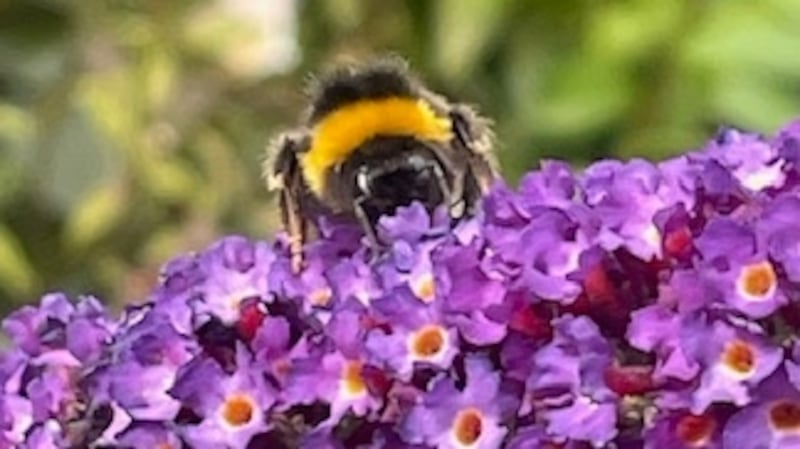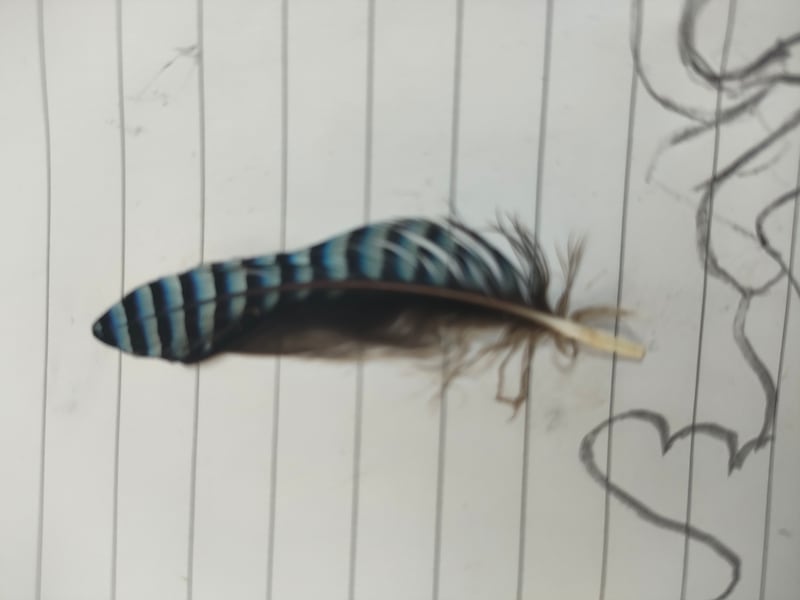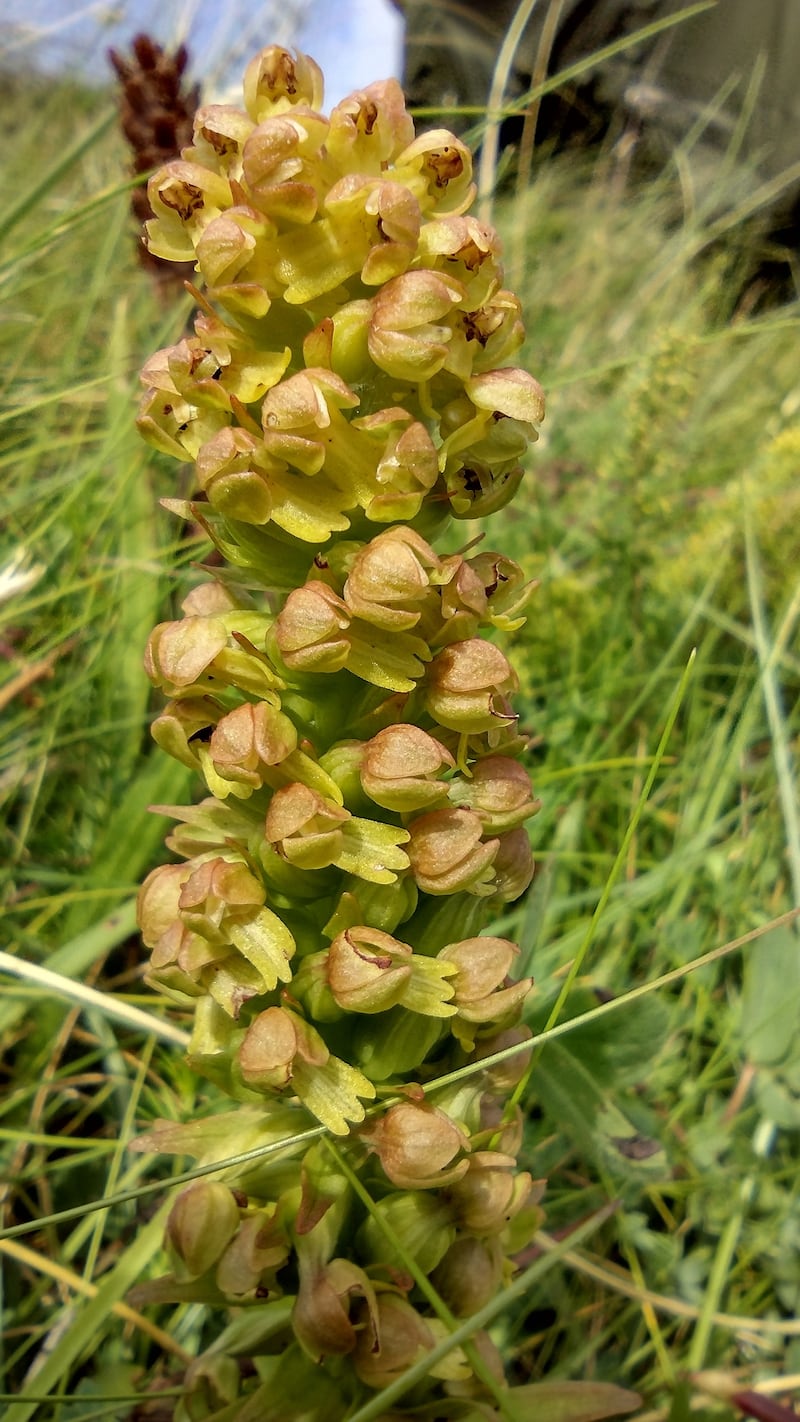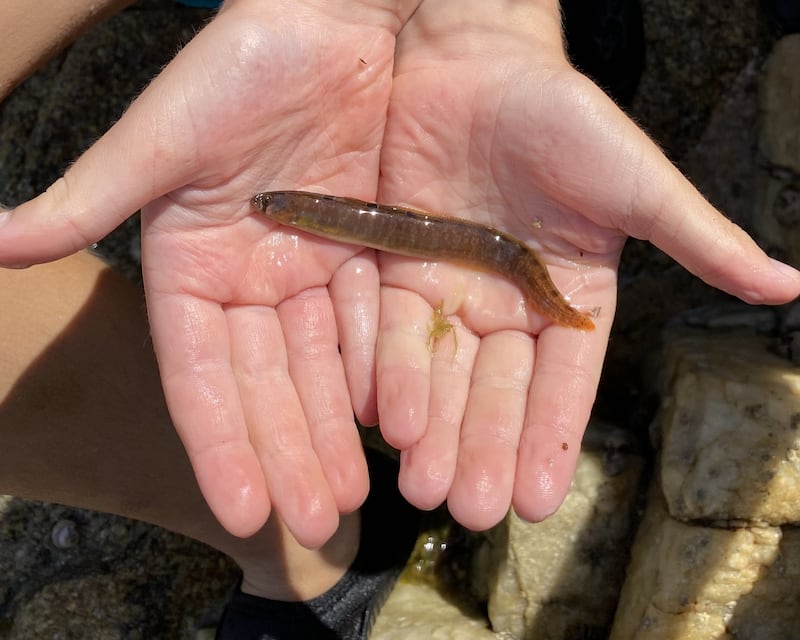I spotted this hawkmoth at my golf club in early August. My brother says it is an oleander. Is he correct and is it quite rare? Gordon Birch. Dublin
Understatement of the year. There have only ever been seven Irish records, with the last one in 1997. It is a vagrant to Ireland from southern Europe and north Africa. It feeds from dusk on tubular flowers such as honeysuckle but it never breeds here. It is so-called because the caterpillars feed on oleander leaves in southern Europe. It is a huge moth with a wingspan of up to 130mm. Michael O’Donnell of Moths Ireland recommends that such a valuable record be submitted to the National Biodiversity Data Centre.

This is a picture of a bumblebee feeding on buddleia. Is it true that bumblebees are like cuckoos and lay their eggs in other bees’ nests? Patrick Galvin, Dublin
We have 21 different bumblebee species in Ireland, of which six are cuckoo bumblebees. Unlike the other 15 species, whose queens overwinter and then build nests in spring and produce workers that collect pollen and nectar for subsequent generations, cuckoo bumblebees build no nests. They emerge from hibernation later than the social bumblebee queens, invade their nests, overpower the resident queen and lay eggs. No workers are produced. The existing resident workers must rear the cuckoo queens and drones, which then leave the nest once adult.
READ MORE

I recently found this beautiful feather in St Anne’s Park while on a walk with my family. I thought it was very unusual with its black and blue stripe. Could you please tell me what kind of bird it is from? I added it to my scrapbook to add colour to a drawing of Pegasus. Jane Eames (7), Dublin
[ Ladybirds and their lunchesOpens in new window ]
This is a wing feather from a jay – a noisy woodland bird. Like magpies, it is a member of the crow family. Long ago jays were hunted in Ireland for these colourful feathers, which are only on their wings – the birds are mainly pink-brown in colour. The feathers were used to make fly hooks for fishing. I am sure it has greatly enhanced your drawing of the Greek winged horse.

We came across this orchid in the machair at Lunniagh in northwest Donegal but struggled to identify it with confidence. Our suspicion is that it is a frog orchid; can you confirm? Michael and Fionnbarr Cross, Donegal
It is definitely a frog orchid. Whoever gave it its English name apparently thought the flowers had a distinctly toad-like head. Its habitat is limestone pavement, machair and wet meadows. The three small, pointed lobes on the lower petal of each flower are characteristic.

While rock pooling in Sandycove in August we found this eel-like fish hidden among the seaweed. Is it a baby conger eel? Conor (9) and Caroline (9) Corbett, Glenageary, Dublin
While it does indeed look long and bendy like an eel, it is actually a rock pool fish called a butterfish or gunnel. Its body is flattened sideways and is covered with slimy mucus, making it difficult for a predator to get a good grip on it. It can grow up to 20cm at most. Conger eels spawn far out at sea in very deep water, and the young eels swim to the coasts, where they live in holes in rocks and among wrecks. They can grow up to two metres long and can bite off the fingers of fishermen who try to disentangle them from their nets. They do taste good, however, when roasted or stewed.
Please submit your nature query, observation, or photo, with a location, via irishtimes.com/eyeonnature or by email to weekend@irishtimes.com














